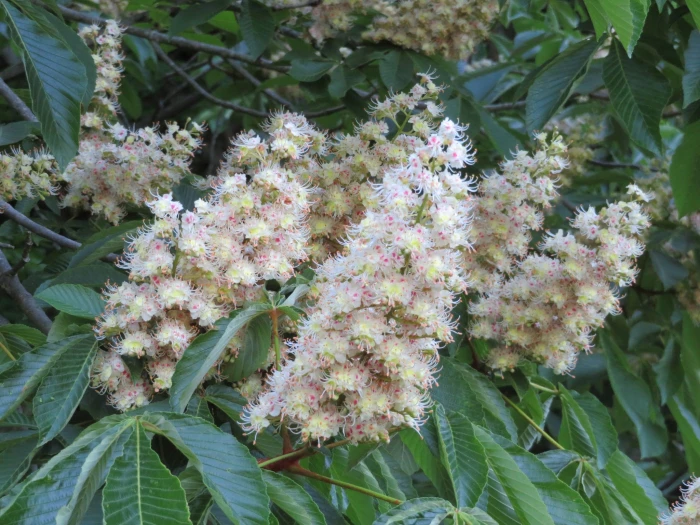Japanese Horse-Chestnut
(Aesculus turbinata)
Japanese Horse-Chestnut (Aesculus turbinata)
/
/

belvedere04
CC BY 4.0
Image By:
belvedere04
Recorded By:
Copyright:
CC BY 4.0
Copyright Notice:
Photo by: belvedere04 | License Type: CC BY 4.0 | License URL: http://creativecommons.org/licenses/by/4.0/ | Rights Holder: belvedere04 | Publisher: iNaturalist | Date Created: 2020-05-29T07:09:48-07:00 |

























Estimated Native Range
Climate Requirements for Maryland Heights, Missouri
| This Plant | Your Site | Plant Suitability for Your Location | ||
|---|---|---|---|---|
| • Precipitation | 19" - 102" | 38" | Aquatic | Aquatic |
| • High Temp. | 61°F - 91°F | 89°F | Your summer temperatures are normal for this plant. | Excellent |
| • Low Temp. | -0°F - 39°F | 20°F | Your winter temperatures are normal for this plant | Excellent |
This plant should grow well at your location with about N inches per year (Y minutes per month) of irrigation.
Summary
Aesculus turbinata, commonly known as Japanese horse-chestnut, is a deciduous tree native to mountain forests in Japan. It can grow to a height of 98 feet (30 meters) and is characterized by a broad, rounded crown. The leaves are palmately compound, providing a dense canopy. The tree produces showy white to pale yellowish flowers in erect panicles during late spring to early summer, followed by dark brown capsules containing large, glossy seeds. These seeds are not only historically significant as a food source for the Jōmon people but are also used in contemporary Japanese cuisine to make "Tochimochi."
Japanese horse-chestnut is valued for its ornamental flowers and stately form, making it a popular choice for large gardens, parks, and avenues. It thrives in full sun to part shade and prefers well-drained soils, though it is adaptable to various soil types. While it is relatively low-maintenance, it requires ample space to accommodate its size. Gardeners should be aware of potential issues such as leaf scorch and horse-chestnut leaf miner. Despite these concerns, its resistance to pollution makes it suitable for urban environments.CC BY-SA 4.0
Japanese horse-chestnut is valued for its ornamental flowers and stately form, making it a popular choice for large gardens, parks, and avenues. It thrives in full sun to part shade and prefers well-drained soils, though it is adaptable to various soil types. While it is relatively low-maintenance, it requires ample space to accommodate its size. Gardeners should be aware of potential issues such as leaf scorch and horse-chestnut leaf miner. Despite these concerns, its resistance to pollution makes it suitable for urban environments.CC BY-SA 4.0
Plant Description
- Plant Type: Tree
- Height: 40-100 feet
- Width: 40-80 feet
- Growth Rate: Moderate
- Flower Color: Cream, White
- Flowering Season: Summer
- Leaf Retention: Deciduous
Growth Requirements
- Sun: Full Sun, Part Shade
- Water: Medium
- Drainage: Medium
Common Uses
Bird Garden, Low Maintenance
Natural Habitat
Mountain forests in Japan
Other Names
Common Names: チョウセントチノキ, Tochinoki, 칠엽수
Scientific Names: Aesculus turbinata, Aesculus dissimilis, Aesculus japonica, Aesculus turbinata f. pubescens, Aesculus turbinata f. pubescens, Aesculus turbinata var. pubescens, Pawia dissimilis, Pawia turbinata
GBIF Accepted Name: Aesculus turbinata